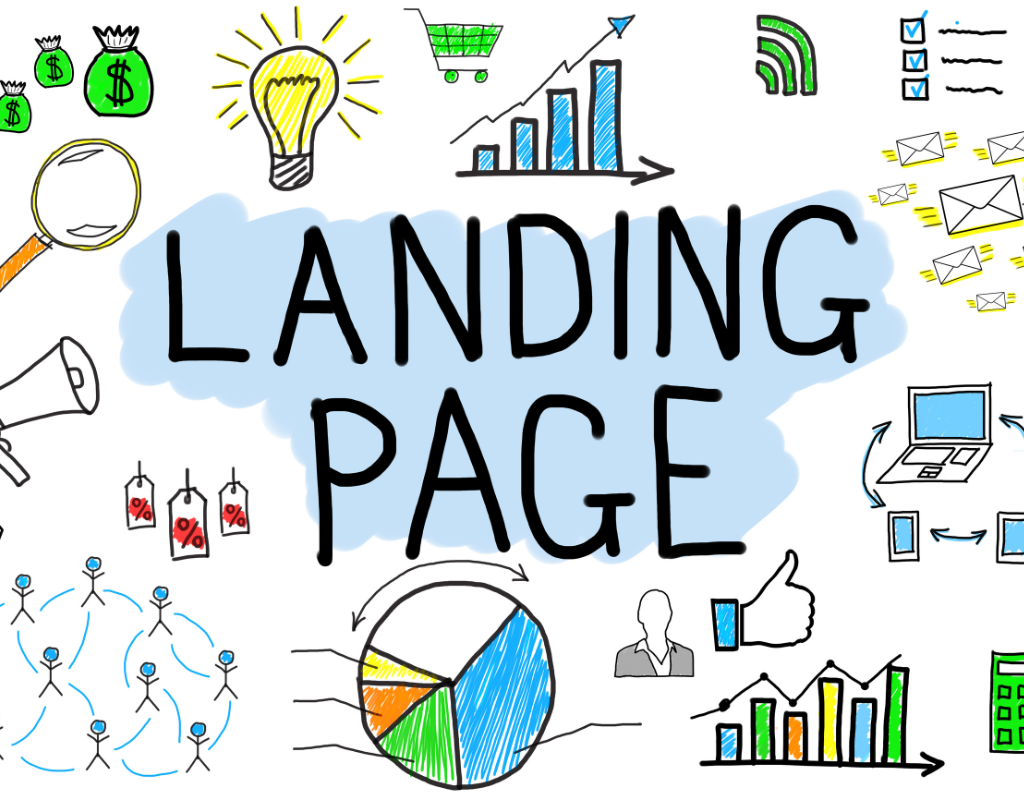A/B testing, also known as split testing, is an essential method for improving the effectiveness of your landing pages. This process involves comparing two versions of a page to determine which one performs better in terms of generating leads, driving sales, or achieving other goals. In this article, we will explore various A/B testing strategies for landing page optimization, and share tips and best practices to help you boost conversions and increase the effectiveness of your lead generation services.
What Is A/B Testing?
A/B testing is a data-driven method for comparing two or more variations of a web page, email, advertisement, or other digital content to determine which version performs better in terms of user engagement, conversions, or other defined goals. The process involves randomly assigning users to different variations and then tracking their interactions to measure the performance of each version.
For example, an e-commerce website might want to test two different headlines on their product page to see which one results in more sales. They could create two versions of the page, one with each headline, and then randomly present each version to different users. By comparing the sales generated from each version, the company can determine which headline is more effective at driving conversions.
Why Is A/B Testing Important?
A/B testing is important because it allows businesses to make informed decisions about their digital content, based on real user data. This process helps companies optimize their online presence and marketing efforts, which can lead to several benefits:
1. Improve conversion rates: By identifying which variations of a page or content element are more effective at driving conversions, businesses can increase the number of users who complete a desired action, such as making a purchase or signing up for a newsletter.
Real-life example: A software company found that changing the color of their “Download” button from blue to green resulted in a 30% increase in downloads. By implementing this change, the company was able to significantly boost their conversion rate.
2. Enhance user experience: A/B testing can help uncover user preferences, allowing businesses to tailor their content and design to better meet the needs of their audience. This can lead to increased satisfaction and engagement. Real-life example: An online news platform tested two different layouts for their homepage to determine which one resulted in higher user engagement. They found that a layout featuring larger images and fewer headlines led to users spending more time on the site and consuming more content.
3. Increase revenue: By improving conversion rates and user experience, A/B testing can ultimately lead to increased revenue. This is especially important for businesses that rely on online sales or advertising revenue. Real-life example: An online retailer discovered that by simplifying their checkout process and reducing the number of steps required to complete a purchase, they were able to increase the average order value by 10%. This change had a direct impact on the company’s bottom line.
4. Reduce bounce rates: A/B testing can help identify factors that cause users to leave a site without engaging with the content or completing a desired action. By addressing these issues, businesses can reduce bounce rates and improve user retention. A travel blog found that by reducing the number of advertisements on their site and increasing the prominence of their newsletter sign-up form, they were able to decrease their bounce rate by 15%.

5. Optimize marketing efforts: A/B testing can be applied to various aspects of a company’s marketing strategy, such as email campaigns, paid advertisements, and social media content. This can help businesses get more value from their marketing investments by refining their messaging and targeting. Real-life example: A marketing agency ran an A/B test on two different subject lines for an email campaign promoting a client’s new product. They discovered that the subject line featuring a question resulted in a 25% higher open rate, leading to more users engaging with the email and ultimately driving more sales for the client.
Setting Up A/B Testing
Here is how you can set up A/B testing strategies for your landing page optimization:
Define Your Goals
Before starting an A/B test, it’s essential to define your goals. These might include increasing sign-ups, boosting sales, or improving user engagement. Having clear goals will guide your testing process and help you measure the success of your optimizations.
Choose The Right Testing Tools
There are several A/B testing tools available, both free and paid. Some popular options include Google Optimize, Optimizely, and VWO. Evaluate your needs and choose a tool that suits your requirements and budget.
Create Variations
Develop different variations of your landing page by changing elements like headlines, calls-to-action, images, or layout. Ensure that each variation targets a specific hypothesis you want to test.
A/B Testing Best Practices
Here are some of the best practices to keep in mind when you’re implementing A/B testing for your purpose:
Test One Element At A Time
To get reliable results, focus on testing a single element at a time. This allows you to pinpoint exactly which change led to improved performance.
Use A Large Sample Size
For statistically significant results, ensure that you have a large enough sample size. This will give you more confidence in the outcomes of your tests.
Run The Test For An Adequate Duration
Running your A/B tests for an appropriate duration ensures that you capture a representative sample of user behavior. This helps to avoid making decisions based on incomplete or misleading data.

Analyze And Interpret Results
Once your test is complete, analyze the results and determine which variation performed better. Use this data to inform future tests and landing page optimizations.
Tips For A/B Testing Success
How do you ensure that your A/B testing endeavor will result in a success? Well, here are some tips you can follow to ensure that:
Prioritize High-Impact Elements
Focus on testing elements that have the potential to significantly impact your conversion rate, such as headlines, calls-to-action, and page layout.
Test Multiple Variations
Don’t limit yourself to just two variations. Test multiple variations simultaneously to speed up the optimization process and identify the best-performing combination of elements.
Keep Iterating
A/B testing is an ongoing process. Continuously test and optimize your landing pages to ensure they remain effective and up-to-date with user preferences.
Advanced A/B Testing Techniques
If you want to explore A/B testing further, you’ll be happy to know that there are several advanced A/B techniques available to make things better. Here are some such advanced techniques for you to keep in mind:
Multivariate Testing
Multivariate testing (MVT) involves testing multiple elements simultaneously to determine the best combination of changes. This technique can help you identify the most effective mix of elements, but it requires a larger sample size and more complex analysis.
Personalization
Segment your audience and run A/B tests for specific user groups. This can help you create tailored landing pages that cater to the unique needs and preferences of different users, ultimately boosting conversions.
Geo-Targeting
Optimize your landing pages for users from specific locations using geo-targeting. Test variations with localized content, currencies, and languages to improve user experience and increase conversions.
Common A/B Testing Pitfalls To Avoid
With all said and done, there are always some pitfalls when you’re moving to a new strategy or approach. Being cognizant of those pitfalls will ensure you don’t fall into them, and find your way around it. Here are some such pitfalls to keep in mind:
Not Testing Long Enough
Ending your tests prematurely can lead to misleading results. Make sure you run tests long enough to ensure statistical significance and avoid making decisions based on insufficient data.
Ignoring Statistical Significance
Statistical significance is crucial in determining the validity of your A/B test results. Make sure your tests reach the desired level of significance before drawing conclusions and implementing changes.

Focusing Solely On Conversion Rate
While conversion rate is an essential metric, it’s crucial to consider other factors like user engagement, average order value, and customer lifetime value. This will help you make more informed decisions and optimize your landing pages more effectively.
Failing To Iterate and Learn
A/B testing is an ongoing process, and it’s essential to learn from each test. Use the insights you gain from each experiment to inform your future tests and continually optimize your landing pages.
Conclusion
A/B testing is a powerful tool for landing page optimization and driving better results from your lead generation services. By following the tips, best practices, and advanced techniques outlined in this article, you can make data-driven decisions that lead to improved conversion rates, enhanced user experience, and increased revenue. Always remember to iterate and learn from your tests, and don’t be afraid to explore new strategies as you continue to optimize your landing pages for success.
To Read More Tech Blogs Visit: Technical Nick

















